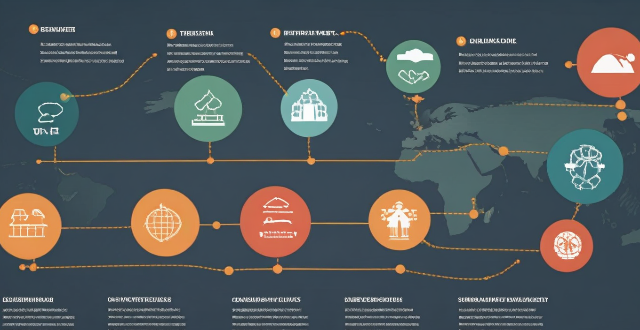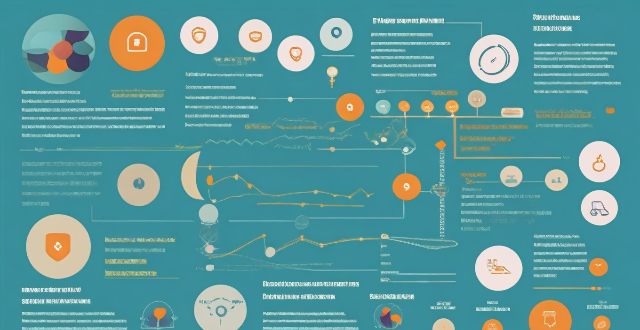Reporting Climate

How does TCFD align with other global reporting initiatives like the Global Reporting Initiative (GRI) ?
The Task Force on Climate-related Financial Disclosures (TCFD) and the Global Reporting Initiative (GRI) are two global sustainability reporting frameworks that share several key points of alignment. Both provide guidelines for companies to report on their sustainability performance, with TCFD focusing specifically on climate-related financial disclosures and GRI covering a broader range of sustainability issues. They also emphasize the importance of materiality assessment, stakeholder engagement, risk management, and climate change disclosures in determining which aspects are most relevant to an organization's business model and strategy. By following both frameworks, companies can provide a more comprehensive picture of their sustainability performance and demonstrate their commitment to addressing climate change and other sustainability issues.

How does TCFD differ from other sustainability reporting frameworks ?
The Task Force on Climate-related Financial Disclosures (TCFD) is a unique sustainability reporting framework that focuses specifically on the financial risks and opportunities associated with climate change. It differs from other frameworks such as the Global Reporting Initiative (GRI) and the Sustainability Accounting Standards Board (SASB) in several key ways, including its exclusive focus on climate change, emphasis on financial implications, stakeholder engagement, specific recommendations for reporting, and integration with financial reporting. TCFD's approach helps companies effectively communicate their climate-related financial risks and opportunities, making it a valuable tool for navigating the complexities of climate change and its potential impact on their bottom line.

How does TCFD affect corporate reporting ?
The Task Force on Climate-related Financial Disclosures (TCFD) has significantly impacted corporate reporting by requiring enhanced disclosure of climate-related risks and opportunities. Companies must identify, assess, and manage these risks, including through scenario analysis and governance processes. They also need to disclose how climate change affects their business model and strategy, as well as the alignment of their portfolio with a low-carbon transition. Operational performance metrics such as emissions data and energy use must be reported, along with information on positive impacts and innovation related to climate action. Overall, the TCFD guidelines aim to promote transparency and encourage companies to integrate sustainability into their financial decision-making processes.

What role does media coverage play in shaping public opinion on climate skepticism ?
The text discusses the role of media coverage in shaping public opinion on climate change and climate skepticism. It highlights the influence of biased reporting, sensationalism, balanced coverage, source credibility, and audience perception on how individuals form their beliefs and attitudes towards these issues. The text emphasizes the importance of accurate, balanced, and transparent reporting by media outlets to ensure that the public is well-informed and able to make informed decisions based on evidence.

What are the most common ESG reporting frameworks used by companies ?
The Global Reporting Initiative (GRI) is a widely used sustainability reporting framework that provides a standardized approach for companies to report on their economic, environmental, and social performance. The GRI consists of several standards, including those related to disclosure principles, management approach, economic performance, environmental performance, social performance, governance, non-financial information disclosure, reporting principles, boundaries, guidelines, content, quality, frequency, language, format, timeframe, period, entities, scope, limitations, assurance, certification, training, tools, collaboration, innovation, stakeholder engagement, data quality, impact assessment, risk management, performance indicators, materiality analysis, and stakeholder engagement process. These standards help organizations prepare high-quality GRI reports that are accurate, reliable, and consistent across different organizations and sectors.

What ethical considerations should be taken into account when reporting on athletes' personal lives ?
The text discusses ethical considerations in reporting athletes' personal lives, emphasizing respect for privacy, accuracy and fairness, consent and participation, handling sensitive topics with care, public interest, age and maturity, cultural sensitivity, and aftermath support. It suggests that journalists should avoid intrusion, verify information, ask for permission, handle sensitive topics with care, consider age and maturity, recognize cultural differences, provide resources for support, and follow up responsibly. The text concludes that reporting on athletes' personal lives requires a nuanced approach that prioritizes ethics over sensationalism to maintain integrity while informing the public about the human aspects of sports figures they admire.

What role does technology play in improving environmental monitoring ?
Technology plays a pivotal role in enhancing environmental monitoring by enabling advanced data collection, analysis, visualization, reporting, and conservation efforts. Satellite imagery, drone surveillance, sensor networks, big data analytics, GIS, real-time reporting systems, and early warning technologies are among the key tools used. These advancements not only improve our understanding of environmental changes but also aid in managing resources and raising public awareness about ecological issues.

How can private sector participate in climate financing ?
Private sector participation in climate financing can take various forms, including direct investments in renewable energy projects, issuing green bonds or sustainable investment funds, carbon credit trading, R&D for innovative climate solutions, forming partnerships, adopting circular economy models, implementing eco-friendly business practices, maintaining transparency in environmental impact reporting, providing philanthropic support, and engaging employees in sustainability efforts. These actions not only mitigate climate change but also often improve corporate reputation and open new markets.

What is the status of climate finance commitments made during climate change negotiations ?
This text discusses the status of climate finance commitments made during climate change negotiations, highlighting their importance in mitigating and adapting to climate change. It outlines key points regarding financial commitments, progress towards targets, channels for finance, and the need for improved monitoring and reporting mechanisms. The text also explores the involvement of both the public and private sectors in climate finance, as well as the challenges and opportunities that exist in this area. Finally, it emphasizes the significance of increasing transparency, improving accountability, and exploring innovative financing solutions to ensure that these commitments result in meaningful actions to address climate change.

What are the benefits of adopting a climate leadership approach in business ?
Adopting a climate leadership approach in business is crucial for several reasons. Here are some benefits: 1. **Enhanced Reputation and Brand Image**: Companies that prioritize sustainability often enjoy enhanced reputations among consumers, investors, and the general public. This can lead to increased brand loyalty and customer satisfaction. 2. **Risk Management and Resilience**: A proactive approach to climate change helps businesses identify and mitigate potential risks associated with extreme weather events, supply chain disruptions, and regulatory changes. Investing in renewable energy sources, efficient infrastructure, and sustainable practices can make businesses more resilient to the impacts of climate change. 3. **Financial Performance and Cost Savings**: Implementing energy-efficient technologies and processes can lead to significant cost savings on utility bills. Many investors now prefer to invest in companies with strong environmental credentials, making it easier for these businesses to secure funding. Embracing climate leadership can also spur innovation, leading to the development of new products, services, or processes that generate additional revenue streams. 4. **Attracting and Retaining Talent**: Younger generations are passionate about working for companies that share their values on sustainability and social responsibility. Offering a workplace culture that aligns with personal values can improve employee satisfaction and reduce turnover rates. 5. **Compliance with Regulations and Reporting Requirements**: As governments around the world implement stricter environmental regulations, adopting a climate leadership approach ensures businesses stay ahead of these changes. Many stakeholders, including investors and consumers, now expect companies to report on their environmental impact. Being proactive in this area simplifies reporting requirements and demonstrates transparency.

What are the main goals of the Glasgow Climate Pact ?
The Glasgow Climate Pact, adopted at the 26th United Nations Climate Change Conference (COP26) in November 2021, aims to combat climate change by keeping global temperature rise below 2 degrees Celsius and striving to limit it to 1.5 degrees Celsius. The main goals of the pact are urgent action on climate change, strengthening global cooperation, providing adequate finance for climate action, balancing mitigation and adaptation efforts, and ensuring transparency and accountability in climate action. Countries must take immediate steps to reduce greenhouse gas emissions, invest in adaptation measures, work together to develop effective climate policies, mobilize resources from public and private sectors, strike a balance between mitigation and adaptation efforts, and establish clear reporting mechanisms and monitoring systems to track progress towards achieving climate goals.

How does TCFD help in managing climate-related risks ?
The Task Force on Climate-related Financial Disclosures (TCFD) is a global initiative aimed at helping companies manage climate-related risks through consistent disclosure. The TCFD framework guides businesses in identifying and assessing these risks, integrating them into business planning, ensuring transparency through reporting and disclosure, conducting scenario analysis and stress testing, and recognizing potential opportunities arising from the transition to a low-carbon economy. By following this structured approach, companies can protect themselves from negative impacts of climate change and position themselves advantageously in emerging markets related to climate solutions.

How do international climate agreements influence national climate policy assessments ?
International climate agreements influence national climate policy assessments by setting global goals and targets, providing guidance on best practices, facilitating technology transfer and cooperation, enhancing transparency and accountability, and offering financial support for climate action. Examples of such agreements include the UNFCCC, Kyoto Protocol, and Paris Agreement.

What is the significance of climate finance in achieving the goals of global climate governance ?
Climate finance is vital for achieving global climate governance goals, supporting mitigation, adaptation, sustainable development, innovation, cooperation, transparency, policy integration, capacity building, and private sector engagement.

What are the key trends in climate financing ?
The key trends in climate financing highlight a collaborative effort between public and private sectors, technology-driven solutions, international cooperation, an emphasis on resilience and adaptation, a focus on just transition and inclusive growth, and accountability and performance measurement. Governments are issuing green bonds, forming public-private partnerships, and establishing climate funds. Private sector innovations include impact investing, sustainable finance, and carbon credit trading. Technology is being used to increase transparency in climate finance flows, streamline access to climate finance, and identify investment opportunities. International cooperation is facilitated through global climate funds, bilateral and multilateral agreements, and alignment with sustainable development goals. Resilience and adaptation are receiving more funding, with insurance schemes and community-based adaptation initiatives gaining support. Just transition and inclusive growth are prioritized, with a focus on equitable energy transitions, gender equality, and economic opportunities. Accountability and performance measurement are ensured through results-based finance, monitoring and reporting mechanisms, and transparency and anti-corruption measures.

What strategies can companies implement to mitigate the impact of climate change on their supply chains ?
Companies can mitigate the impact of climate change on their supply chains by conducting a climate risk assessment, developing sustainable sourcing policies, implementing energy efficiency measures, investing in renewable energy sources, collaborating with suppliers and partners, monitoring performance, encouraging innovation and technology adoption, and engaging with stakeholders.

How can we measure the effectiveness of community climate adaptation efforts ?
Measuring the effectiveness of community climate adaptation efforts is crucial for understanding their impact on resilience to climate change. Key steps include setting clear objectives, developing relevant indicators, collecting and analyzing data, transparent reporting, evaluating success, iterative improvement, community engagement, and policy alignment. By following these steps, communities can ensure their adaptation efforts are effective and continuously improved.

How does climate change legislation influence corporate sustainability practices ?
Climate change legislation significantly influences corporate sustainability practices by setting standards for environmental responsibility. It compels companies to report on their environmental impact, use market-based mechanisms like cap-and-trade systems, and consider tax incentives or penalties in their operations. This legislation also creates investor pressure through ESG criteria and shareholder resolutions, leading companies to enhance their sustainability practices to meet investor expectations. Additionally, it opens market opportunities for green products and services and encourages renewable energy adoption. Companies that comply with climate legislation can improve their brand image and stakeholder engagement. Furthermore, such legislation aids in risk management by requiring companies to assess physical and transition risks associated with climate change. Overall, climate change legislation is a driving force behind corporations adopting more sustainable practices.

How effective has international climate finance been in reducing greenhouse gas emissions ?
The text discusses the effectiveness of international climate finance in reducing greenhouse gas emissions. It states that such a financial mechanism is vital for supporting developing countries to reduce their GHG emissions and adapt to climate change impacts, but it falls short of global climate action needs. The key points include the total funds committed and disbursed, allocation across sectors and regions, direct and indirect emission reductions achieved, and challenges related to funding adequacy, allocation, and monitoring. The conclusion emphasizes the importance of addressing these challenges to enhance the effectiveness of international climate finance in the future.

What are the best practices for businesses to report on their environmental impact as part of their CSR initiatives ?
Reporting on environmental impact is crucial for businesses as part of their CSR initiatives. Best practices include setting clear objectives and goals, collecting relevant data, analyzing environmental footprint, developing an action plan, communicating findings, encouraging stakeholder engagement, and continuously improving the reporting process. By following these steps, businesses can demonstrate their commitment to sustainability and transparency while providing valuable information to stakeholders about their environmental performance.

How can climate finance be integrated with national development plans and strategies ?
Integrating Climate Finance with National Development Plans and Strategies emphasizes the importance of aligning climate finance with national priorities, ensuring policy coherence, participatory planning, resource mobilization, risk management, monitoring and evaluation, capacity building, transparency and accountability. Key implementation steps include assessment and diagnosis, formulation of integrated strategies, financing mechanisms, implementation and disbursement, and reporting and learning. By integrating climate finance, countries can address climate change while promoting sustained economic growth and social well-being.

How can businesses measure and report their environmental performance throughout their supply chains ?
Measuring and reporting environmental performance in supply chains involves setting clear objectives, conducting a baseline assessment, developing an action plan, implementing and monitoring progress, and reporting performance transparently. Adopting standardized metrics, engaging stakeholders, and continuously improving are best practices to effectively manage environmental impact throughout the supply chain.

How can green bonds help finance climate-friendly projects ?
Green bonds are financial instruments that raise capital specifically for climate and environmental projects. They offer increased funding opportunities by attracting a diverse investor base interested in sustainable investing, aligning with ESG criteria, and providing attractive returns. Transparency and accountability are ensured through rigorous certification processes, third-party reviews, and reporting requirements. Green bonds also catalyze climate action by incentivizing sustainable practices and supporting innovation in clean technology. Furthermore, they encourage wider market participation through investor education, public awareness campaigns, policy support, and international collaboration. Overall, green bonds are crucial for financing climate-friendly projects and accelerating the transition to a more sustainable economy.

What are the key provisions of the latest climate change legislation ?
The latest climate change legislation is a comprehensive package of measures aimed at addressing the challenges posed by global warming and climate change. The key provisions include reduction of greenhouse gas emissions, adaptation to climate change impacts, international cooperation and leadership, just transition for workers and communities, and transparency and accountability.

What are the economic implications of the decisions made at climate summits ?
Climate summits like the UNFCCC COP have far-reaching economic implications, affecting sectors from energy to infrastructure and trade. Decisions made at these events can influence investment patterns, job creation, and national economies. Key impacts include shifts towards renewable energy, green innovation, changes in infrastructure, adjustments in fiscal policies, alterations in international trade dynamics, effects on natural resource management, and increased regulatory compliance costs. These decisions are crucial as they help shape a sustainable and climate-resilient global economy.

What are some best practices for managing risk associated with climate change in a global supply chain ?
This article outlines best practices for managing risk associated with climate change in a global supply chain. It suggests assessing climate change risks by identifying potential impacts and evaluating vulnerabilities, developing a risk management plan that includes setting clear objectives and implementing mitigation measures, and monitoring and reviewing performance through tracking progress against objectives and continuously improving strategies. Key strategies include diversifying supplier networks, investing in resilient infrastructure, improving energy efficiency, enhancing supply chain transparency, promoting sustainable practices, establishing regular reporting processes, benchmarking against industry standards, soliciting stakeholder feedback, revising risk management plans regularly, participating in collaborative learning opportunities, and fostering a culture of innovation within the organization.

How can technology support more accurate and efficient climate policy evaluations ?
Technology aids in accurate & efficient climate policy evaluations by offering tools for data collection, modeling, visualization, collaboration, and automation.

How do climate model predictions help in mitigating climate change ?
Climate models help mitigate climate change by identifying risks, developing adaptation strategies, formulating mitigation policies, facilitating international cooperation, and raising public awareness. They provide essential information for decision-makers to plan resilient infrastructure, adjust agricultural practices, implement water management strategies, set energy efficiency standards, establish renewable energy targets, and encourage low-carbon lifestyles.

How can international laws and treaties on children's rights be adapted to include protections against the impacts of climate change ?
Adapting international children's rights laws for climate change is crucial and can be achieved by recognizing the intersectionality of climate change and children's rights, strengthening legal frameworks, enhancing implementation and monitoring mechanisms, promoting education and awareness, advocating for child participation, and investing in research and data collection.

How are international climate agreements enforced, and what are the consequences of non-compliance ?
Enforcement of international climate agreements is crucial for mitigating the effects of climate change. The enforcement relies on mechanisms such as monitoring and reporting, peer review, financial incentives, and consequences of non-compliance. Countries are required to report their greenhouse gas emissions and progress towards meeting their commitments, which are reviewed by other countries and experts. Peer review helps identify any issues or discrepancies in the reported data and promotes transparency and accountability. Financial incentives, such as access to funding for climate action projects, can encourage compliance. Non-compliance can have significant consequences, including loss of credibility, economic impacts, legal actions, loss of funding, and reputational damage. Enforcement mechanisms rely heavily on voluntary compliance and cooperation between nations.